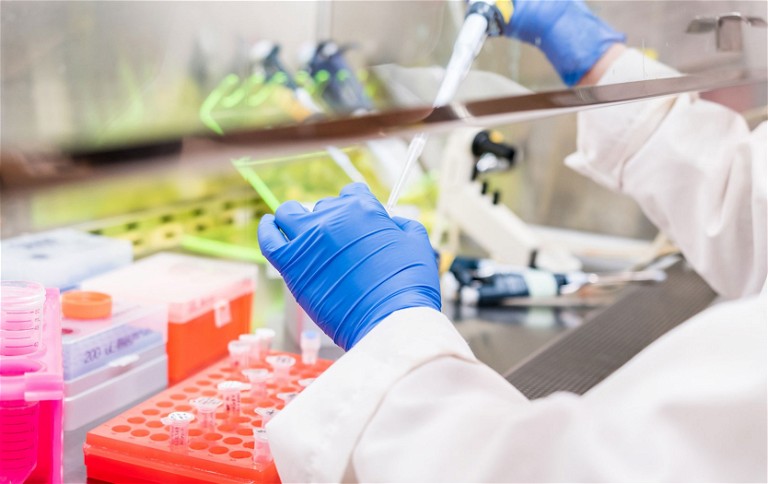Manufacturing: APIs and Smart Factory Solutions
How API Manufacturers and Technology Suppliers Can Mitigate Potent API Processing Risks
Michael Avraam at ChargePoint Technology walks IPT through the challenges and obstacles that companies face when looking to build safety, quality, and efficiency into their potent active pharmaceutical ingredient (API) processes
IPT: What characterises an API compound as potent? In manufacturing, why are these APIs more challenging, expensive, and risky to produce?
Michael Avraam: APIs vary in potency depending on their level of concentration, and the huge variations in what can be classified as a highly potent or a traditional API poses challenges when it comes to understanding their individual handling requirements.
Highly potent APIs (HPAPIs) elicit a more targeted and measurable therapeutic effect in lower concentrations compared to traditional APIs. This enhances the efficacy of the finished drug and allows for smaller dosage sizing, potentially reducing the incidence and severity of adverse side effects in patients.
Examples of HPAPIs include:
- Sex hormones and steroids, which can pose a significant risk to the health and wellbeing of handlers if improperly contained
- Drugs with high toxicity, classified as having an occupational exposure limit at or below 10μg/m3 of air as an eight-hour time-weighted average
- High selectivity drugs that are formulated to affect a single organ or system, which can bind to specific receptors or enzymes, impacting their function and having the potential to cause cancers
- Newly discovered ‘novel’ drugs with undetermined potency levels are classified as highly potent until proven otherwise During processing and downstream manufacturing, exposure to these powerful compounds can be hazardous to operating staff, the operating environment, and patients via cross-contamination. Steps must be taken to safeguard line operatives against exposure, or to ensure containment of waste products to prevent potent chemicals entering the environment surrounding the site to jeopardise wildlife or local communities.
Not only must appropriate measures be put in place to ensure adequate containment of these chemicals, but they must also be tailored to the specific nature of the material being processed.
Failure to do so can have significant legal and financial repercussions for drug developers. They could be fined if they are found guilty of failing health and safety or environmental standards, and could suffer long-term reputational damage as well. This could impact on future revenue and business growth, or even affect recruitment and staff retention.
A growing number of new chemical entities (NCEs) entering the drug development pipeline are classified as HPAPIs, making it all the more important to take steps to safeguard employees from exposure to comply with legislative requirements. Increasingly, regulatory authorities in the US and EU are requiring more stringent monitoring of levels of HPAPI in the air within production facilities. The International Society for Pharmaceutical Engineering’s Standardised Measurement of Equipment Particulate Airborne Concentration guideline stipulates stringent analysis of airborne levels of HPAPIs.
Before developers can begin handling an HPAPI, they must first evaluate and classify its occupational exposure band, or occupational hazard class (OHC), to define the required containment and handling controls.
The required measures vary depending on the level of exposure hazard, but fundamentally, all stages of handling HPAPIs must be carried out in a contained environment. Handlers must implement strict engineering controls to prevent the release of particulates into the atmosphere, and ensure the safe disposal of any waste materials.
Implementing containment measures can lead to additional time and cost as developers must adapt their facilities, train their staff, and invest in the right equipment for safe handling and containment.

What containment and product handling strategies are working best to meet safety/quality/compliance goals for these kinds of compounds cost-effectively?
Key to protecting line operatives from exposure to HPAPIs is the implementation of a robust containment strategy to minimise the potential for line operators to come into contact with highly potent materials.
From transferring a drug substance from one location to another, to meeting legal regulations, there are many complexities that must be considered. While transferring these substances between equipment, containers, or bags, handlers must implement closed-system containment processes.
Between these processes, components must be cleaned and validated after each and every transfer, to ensure there are no contamination risks, and to achieve compliance with strict regulatory guidelines.
The most cost-effective and time-efficient method of streamlining this process is through the use of single use (SU) technologies, as they result in fewer components to clean and validate. SU transfer bags and components such as split butterfly valves (SBVs) make it easier to maintain sterility and containment across transfers, removing the risk of airborne contamination, as the bag never needs to be opened, and can be disposed of after use.
SU SBVs are made up of two components: a stainless steel ‘active’ half which connects to production line equipment, and a single-use ‘passive’ half, which attaches to the primary packaging or filling container.
Once connected, these components create a single disc that allows the product to flow from the line into the container without exposure to the surrounding environment or handlers.
SU SBVs offer the same level of high containment and aseptic processing, but the instant disposal after use helps facilities safely enhance their containment with greater efficiency. As a result, manufacturers are not required to carry out timely validation or integrity testing between transfers and are better able to meet their safety, quality and compliance goals with ease.
What approaches to safety, quality, and compliance might serve manufacturers best – in the near- and long-term – to mitigate the risk and costs of manufacturing potent APIs?
To mitigate future manufacturing risk, and remain compliant with ever-changing legislation changes (such as the impending changes to Annex 1), operators must explore new innovative solutions. This means aligning their facilities with Industry 4.0 technologies (1, 2).
Investment in smart factory technologies (SFTs) helps manufacturers enhance safety by monitoring the use of their equipment across each stage of production, alerting operators to any usage limits impending that may cause potential breaches or containment issues.
SFTs can also alert operators as to when a component may be reaching its end of life, enabling them to better plan their maintenance for long-term use, reduce downtime, and boost overall productivity across the manufacturing of potent APIs. By making existing production lines more efficient, companies are also better able to meet the growing demand for their products.
Using this technology in conjunction with SUs can lead to even greater streamlining of processes. Their implementation across processes means there are fewer permanent components to monitor, and their disposal after use means greater compliance can be achieved by removing the need to clean and validate.
Implementing SFTs also allows manufacturers to enhance compliance, by recording a complete and up-to-date audit trail across every step of the production line, readily available for inspection at any stage.
References

Michael Avraam is the Director of Applications and Solutions Engineering in the Applications and Solutions Engineering department at ChargePoint Technology. He is responsible for leading sales and engineering during projects, and developing new processes that will improve the customer experience.